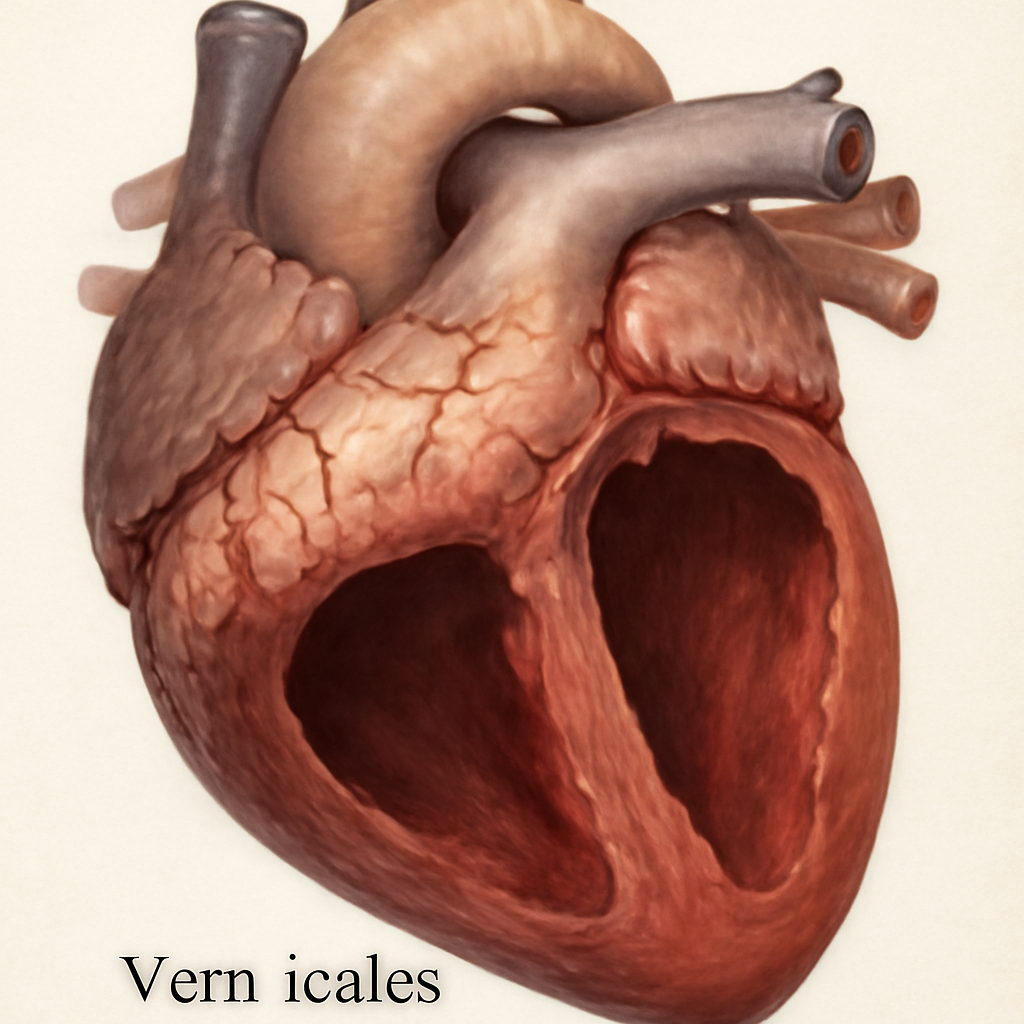Key Takeaways
- The atrium serves as an entry chamber for incoming territories, while the ventricle functions as a powerful exit point for boundary expansions.
- In geopolitical contexts, atriums often involve regions with cultural or economic significance, whereas ventricles relate to areas with strategic military importance.
- The size and influence of atriums can indicate diplomatic openness, contrasted by ventricles which might signal territorial strength or assertiveness.
- Both atriums and ventricles are critical in shaping the overall stability of geopolitical boundaries, but they operate through different mechanisms and strategies.
- Understanding the distinctions between atriums and ventricles aids in analyzing geopolitical negotiations and territorial disputes more effectively.
What is Atrium?

The atrium, in a geopolitical sense, refers to a region or zone that acts as a welcoming gateway for neighboring territories or nations. It often embodies areas characterized by cultural exchange, economic integration, or diplomatic openness. These zones are typically seen as buffers or transitional spaces that facilitate interaction between different regions.
Historical Role of the Atrium
Historically, atriums have served as cultural crossroads where diverse civilizations meet, exchange ideas, and develop mutual understanding. For example, the Mediterranean basin acted as an atrium connecting Europe, Africa, and Asia, fostering trade and diplomacy. These regions often became centers of innovation due to their openness to outside influences. Borders in these zones tend to be fluid, allowing for easier movement of peoples and goods, which enhances regional cooperation.
Economic and Diplomatic Significance
Economically, atriums are zones of commerce that attract trade flows, investments, and diplomatic missions. Countries often establish special economic zones or free trade areas within atriums to promote regional integration. Diplomatically, they serve as platforms for negotiations, peace treaties, or multilateral agreements, reflecting their role as open interfaces. For instance, the European Union’s border regions act as atriums facilitating movement and collaboration across member states.
Cultural and Social Dynamics
The cultural fabric of atriums is usually diverse, with multiple languages, religions, and traditions coexisting peacefully or contentiously. These regions often host festivals, trade fairs, and educational exchanges that reinforce their role as cultural melting pots. Social cohesion in atriums can be fragile, especially if economic benefits are unevenly distributed or if political tensions rise. Nonetheless, their inclusive nature makes them vital in fostering long-term regional stability.
Geopolitical Challenges and Opportunities
While atriums promote cooperation, they also face challenges like border disputes, migration pressures, and resource management issues. The balance between openness and security can be delicate, requiring nuanced diplomacy. Opportunities arise when atriums leverage their diverse strengths to attract foreign investment or to act as mediators in conflicts. For example, the Gulf Cooperation Council nations often act as atriums linking different Middle Eastern countries through economic and diplomatic ties.
Modern Strategic Use of Atriums
In contemporary geopolitics, atriums is used as strategic zones for soft power projection, cultural diplomacy, and regional partnerships. Countries invest in infrastructure, education, and cultural exchanges to strengthen their influence in these regions. The concept of an atrium extends beyond physical boundaries to digital spaces, where online platforms facilitate cross-border collaboration. These regions often become hubs for innovation, trade, and diplomacy, shaping the future of regional geopolitics.
What is Ventricle?

The ventricle, in a geopolitical context, refers to a core or central territory that exerts influence through strength, control, and strategic dominance. It functions as a hub from which power is projected outward to surrounding regions. The ventricle often encompasses areas with military, economic, or political dominance, shaping the surrounding boundaries through assertive actions.
Strategic Importance of Ventricle Regions
Ventricles are often located in areas with significant military or economic infrastructure, enabling them to project power into neighboring territories. For instance, control over a vital port or border crossing can turn a region into a ventricle, facilitating regional dominance. These areas are crucial in maintaining national security and influence over wider regions, especially when they contain key resources or strategic assets.
Military and Security Dimensions
The ventricle’s role in geopolitics frequently involves military strength, with regions fortified by armed forces, alliances, or strategic installations. Countries establish military bases or invest in border fortifications within ventricle zones to safeguard their interests. For example, the presence of NATO bases in certain regions exemplifies how ventricle areas serve as security linchpins for larger alliances.
Economic Control and Resource Management
Economic heft in ventricle regions often comes from control over critical infrastructure like energy pipelines, ports, or industrial centers. These areas wield influence through resource management, trade routes, or financial dominance. Control over oil-rich regions or key shipping lanes exemplifies how ventricle zones shape regional geopolitics through economic leverage.
Political and Diplomatic Leverage
Ventricle regions often serve as leverage points in diplomatic negotiations, where control over these zones can sway regional or global power balances. Countries may use their influence over ventricle areas to negotiate better terms in treaties, trade agreements, or alliances. For example, controlling a central border region can give a nation strategic advantages in regional diplomacy.
Cultural and Identity Aspects
While primarily associated with power projection, ventricle zones can also be regions of strong cultural identity, which reinforces their importance. National narratives often emphasize the centrality of ventricle regions to bolster internal cohesion and external influence. These regions might host capital cities, national symbols, or historical sites that underline their central role in geopolitics.
Challenges of Maintaining Ventricle Regions
Ventricle zones face threats from insurgencies, political instability, or external interference. Maintaining control over these areas requires continuous investment in security, infrastructure, and diplomatic relations. Sometimes, ventricle regions become contested battlegrounds, where rival powers vie for influence or control, leading to conflicts or instability.
Comparison Table
| Parameter of Comparison | Atrium | Ventricle |
|---|---|---|
| Role in geopolitics | Gateway for cooperation and openness | Center of power and strategic control |
| Influence mechanism | Diplomatic and cultural exchanges | Military, economic, and political dominance |
| Physical characteristics | Border zones or transitional regions | Interior regions with strategic infrastructure |
| Economic focus | Trade facilitation and soft power | Resource control and strategic assets |
| Social dynamics | Diverse, inclusive, and collaborative | Unified, often nationalistic or centralized |
| Security concerns | Border security and migration management | Defense, military presence, and internal stability |
| Examples in real-world | European border regions, Gulf cooperation zones | Central Asian republics, strategic ports |
| Diplomatic significance | Platforms for negotiations and alliances | Leverage points for influence and pressure |
| Border fluidity | High, with open or semi-open borders | Low, with strict control and fortified boundaries |
| Impact on regional stability | Can promote stability through cooperation | Can either stabilize or destabilize depending on control |
Key Differences
List of notable distinctions between Atrium and Ventricle:
- Functionality — Atriums act as zones of interaction and openness, whereas ventricles serve as hubs of control and power projection.
- Location — Atriums are generally found at borders or transition areas, contrasting with ventricles which are central or interior regions.
- Influence Style — Atriums leverage diplomacy and cultural ties; ventricles rely on military strength and economic dominance.
- Border Dynamics — Borders in atriums tend to be more permeable, while in ventricles they are fortified and controlled tightly.
- Strategic Focus — Atriums focus on facilitating regional cooperation, whereas ventricles emphasize asserting control over vital assets and territories.
- Social Composition — Atriums tend to be diverse and inclusive; ventricles often exhibit unified national identities or centralized governance.
- Impact on Stability — Cooperation in atriums can foster peace, but control in ventricles can either stabilize or provoke conflicts depending on management.
FAQs
How do geopolitical atriums influence regional diplomacy?
Geopolitical atriums serve as neutral or semi-neutral zones where diplomatic efforts can be more easily conducted, reducing tensions and fostering cooperation. These regions often host international summits, cultural exchanges, and trade agreements, shaping regional stability and integration. Their openness makes them ideal for dialogue, especially in conflict-prone areas.
Can a region simultaneously act as both an atrium and a ventricle?
Yes, in some cases, regions can play dual roles depending on context and perspective. For example, a border zone might function as an atrium fostering cooperation, but within the same area, certain inland zones could operate as ventricles exerting influence over surrounding territories through military or economic means. This duality reflects the complex nature of geopolitical landscapes.
What role do cultural factors play in defining an atrium?
Cultural factors significantly shape an atrium by influencing how regions engage with neighbors, promote exchanges, and build mutual trust. Shared language, traditions, or religious practices facilitate cooperation and make these zones more attractive for diplomatic initiatives. Conversely, cultural differences can also challenge the stability of atriums, requiring sensitive diplomacy to manage diversity.
How do geopolitical ventricles impact regional security dynamics?
Ventricles often underpin regional security by controlling strategic assets; however, their dominance can lead to conflicts if rival powers seek influence over these core zones. Security arrangements, alliances, and military presence in ventricles shape the balance of power, sometimes escalating tensions or deterring aggression depending on how they are managed. Their strategic importance makes them focal points in regional security policies.